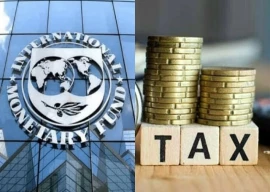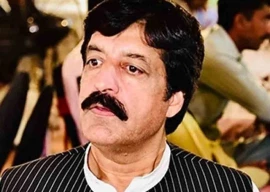
Being someone fortunate enough to top the CSS exam a decade ago, I might be susceptible to bias but at the same time, having gone through the process and having seen scores of new entrants each year, one is at vantage point to see both sides of the picture. To start with, the low percentage itself is not an indicator of low quality. The best universities and big corporations the world over take a lot of pride in low acceptance. If at all, it shows the rigorous selection process and the level of interest. The entry percentage in countries which have still retained a central civil service is roughly the same. In the last Indian Civil Service exam, the pass percentage after the preliminary phase was 2.67 while in Bangladesh, it was around 2.2 per cent. The quality output depends on the bar set for candidates — if the bar is high only the best will get through; but if the bar is low and still the percentage is low then that is surely a decline in quality. The FPSC would insist on the exams being tough and of high standards — a claim that needs to be tested by an independent forum.
The CSS issues, however, are not restricted to examination but relate to allocation of professional services (called occupational groups) and conditions within the service. The CSS cadres now consist of 12 disparate occupational groups lumped together for examination and allotted in accordance with complex formulas of provincial quota, candidate choices and available vacancies. To judge the suitability and competence of a particular candidate for a specific department is next to impossible for the selection panel. Even the candidates themselves remain ambivalent before and after selection about their choice and their allocations which are invariably not the first priority for 90 per cent of the candidates. A candidate even at higher merit will land in an undesirable department just because the vacancies were filled earlier due to the preference of those above him and non-availability of department in his provincial quota. The number of occupational groups is unnecessarily large and totally arbitrary. India has done away with the system long ago and introduced a preliminary screening after which the candidates choose the group they want to compete for. The choice of services is restricted to three divisions; Administration, Police and Foreign Service while the other more professional services like tax, railways and accounts, etc have their separate examinations. As long as the candidates are not selected on the basis of their aptitude and preference, the efficiency post-the-selection will remain lacking.
Provincial quotas are another contentious issue. These were introduced to ensure representation of areas lagging behind in education but have not been reviewed in the light of changing demographics and occupation trends. Civil service is more attractive in rural areas than in urban centres like Karachi and Lahore. Each year many vacancies from Urban Sindh remain vacant due to non-availability of interested candidates, thus defying the assumption on the basis of which the quota system was introduced. In addition to provincial quotas, 10 per cent each for women and minorities have been recently introduced and are incorporated within provincial quotas, a much needed and agreed upon though. The quota allocation are extended beyond the civilian sphere through 10 per cent seats in three services, ie, Administration , Police and Foreign Service to officers selected from within the armed forces — a policy started abruptly in the eighties and unlikely to go away any time soon.
Those who make it through this complex web of filters have understandably more confidence in their lucky stars than their ability. With the passage of time, the stars from heaven are replaced by those on ground. Despite being a product of merit, civil servants’ survival depends upon patronage networks. The patronage works because no human resource model can work without incentives. When legal incentives are absent, the informal and illegal ones take over. Civil service was envisaged with responsibility-authority-resources matrix as a foundation. All three are an illusion now. The talent only follows incentives in this fast-changing world. We can make examinations most competitive, most rigorous and most fair but the quality of human resource will suffer if the work environment rewards free loaders and parasites. Those who have choice do not stay and those who stay are only those who have no choice. The level of (de)motivation is thus understandable.
The solution to the problems pertaining to civil service is more of structure than persons. Many core concepts have to be revisited. Competence has to be replaced with specialisation, performance with productivity, traits with skills, hierarchy with teams and departments with organisations. The productive ones have to be rewarded and the useless have to be weeded out. We are doing the opposite though. The combination of low incentives and job security is the one factor responsible for the inefficient civil service. The best of talents cannot revive the system without major structural reforms. Till then we will have to contend with arbitrary measures like transfers, suspensions and inquiries and make noise about bad service delivery.
Published in The Express Tribune, July 19th, 2018.
Like Opinion & Editorial on Facebook, follow @ETOpEd on Twitter to receive all updates on all our daily pieces.
























COMMENTS (1)
Comments are moderated and generally will be posted if they are on-topic and not abusive.
For more information, please see our Comments FAQ